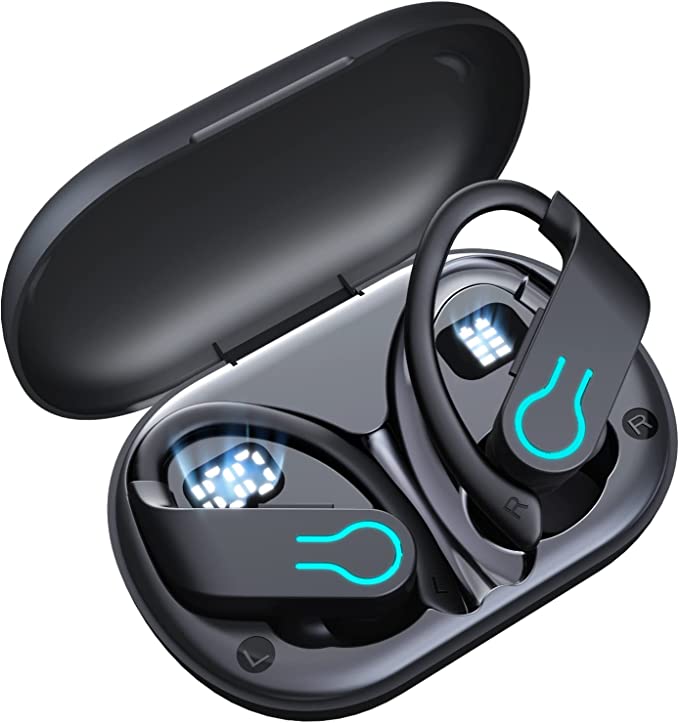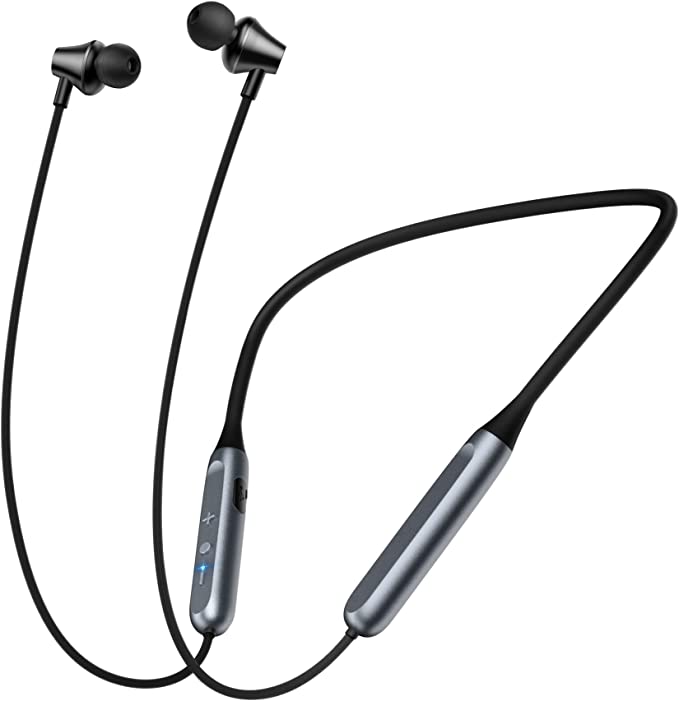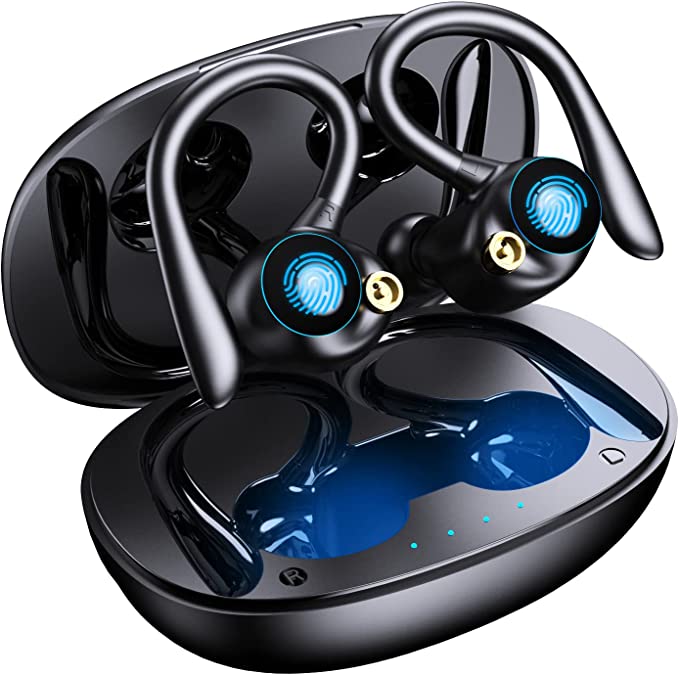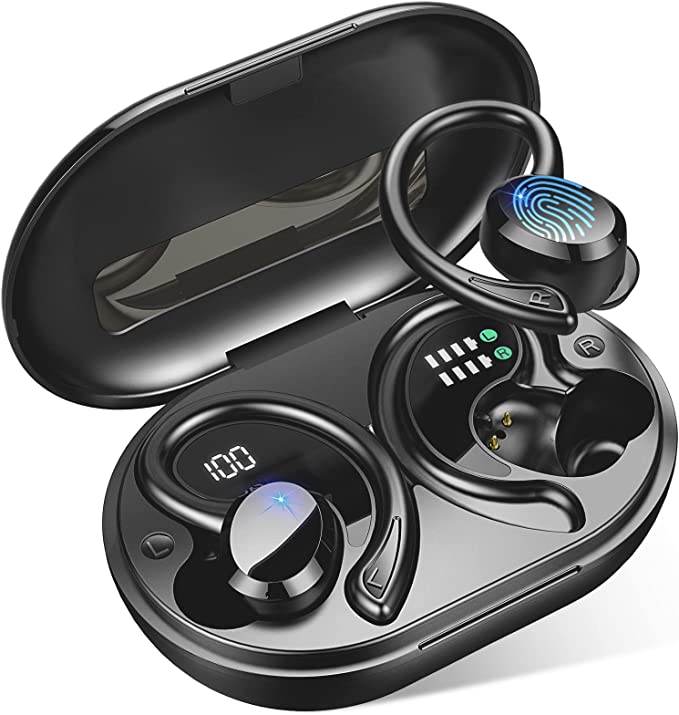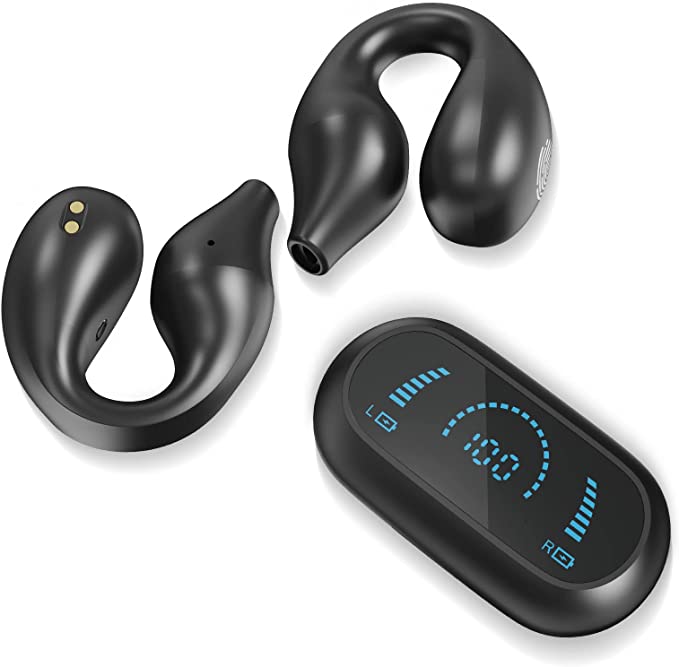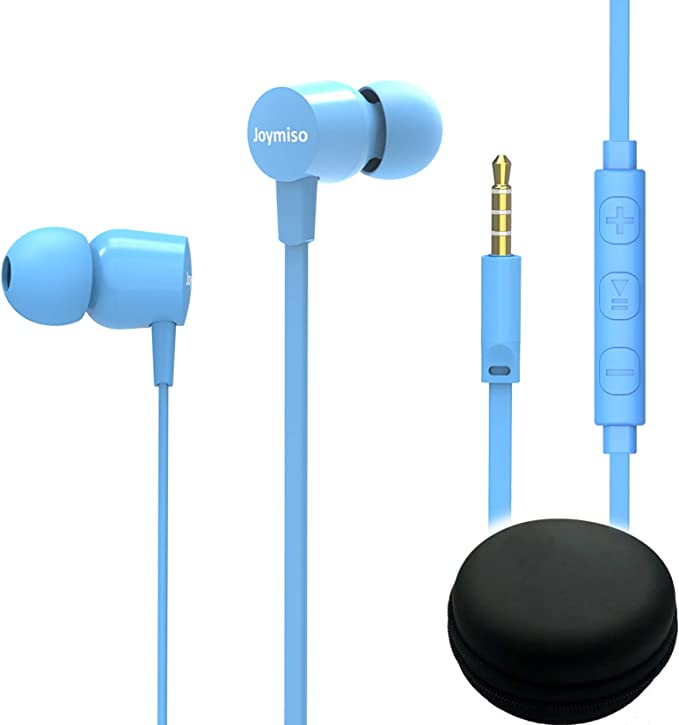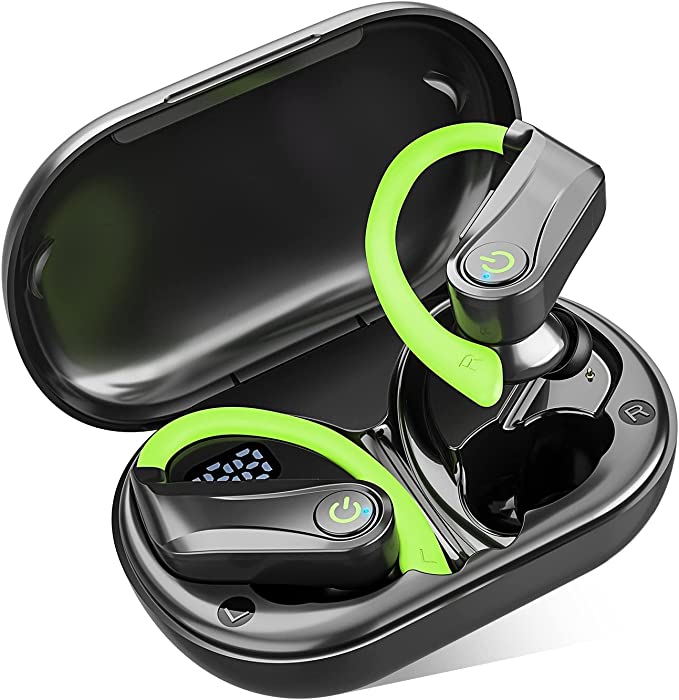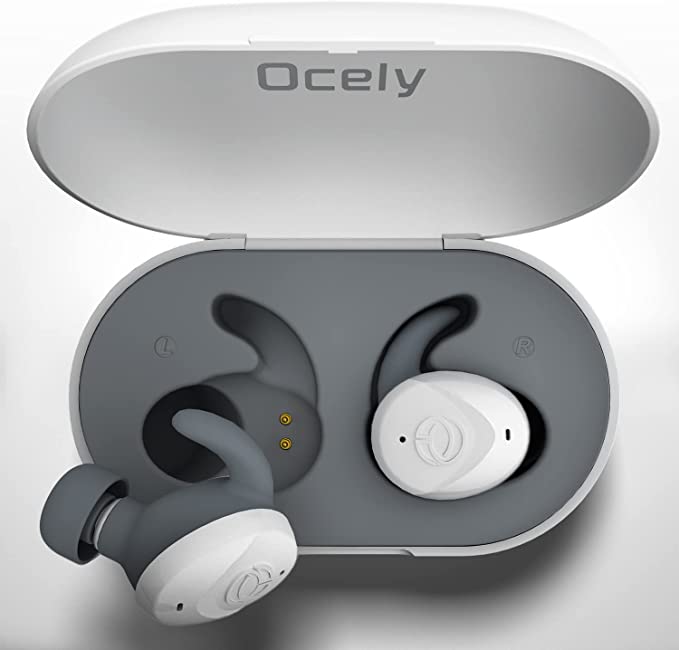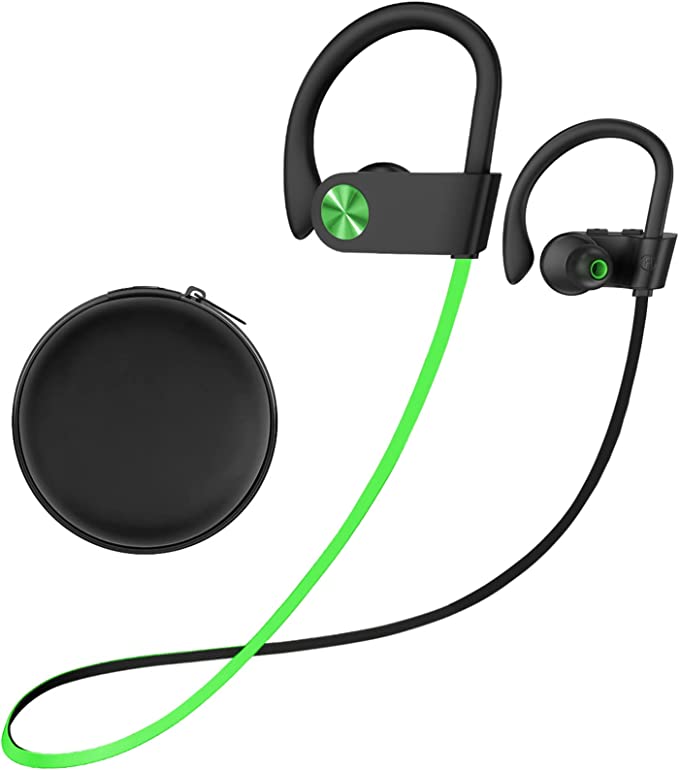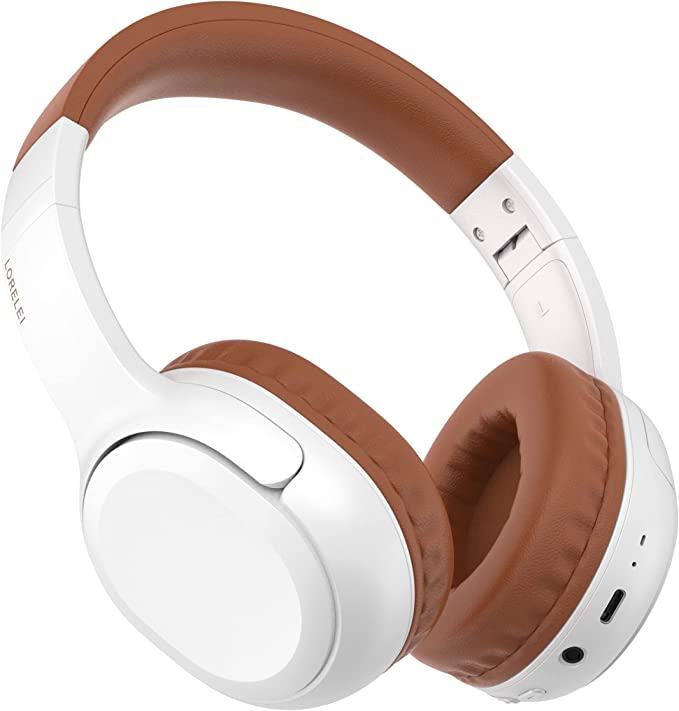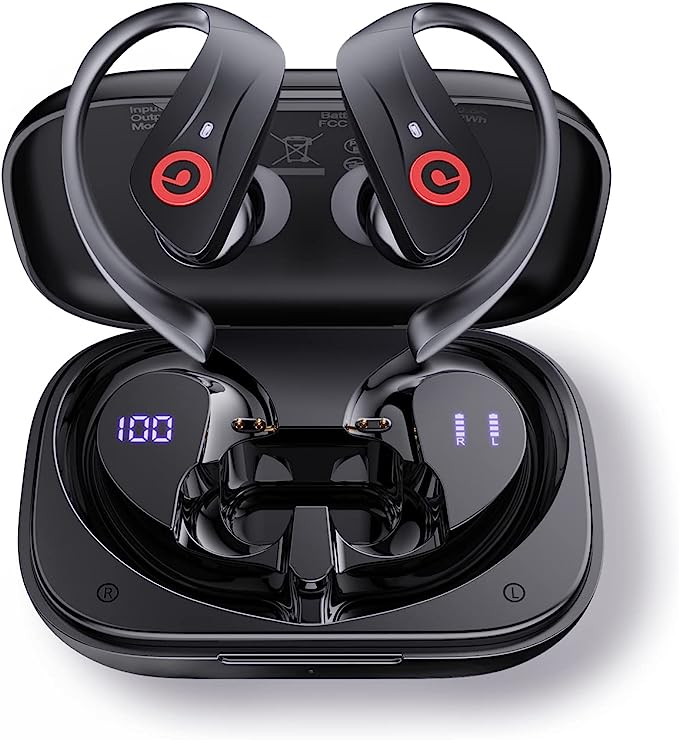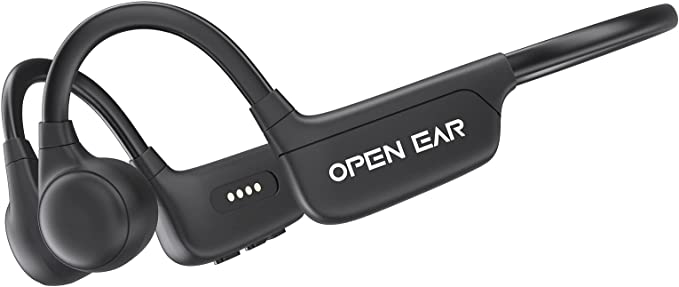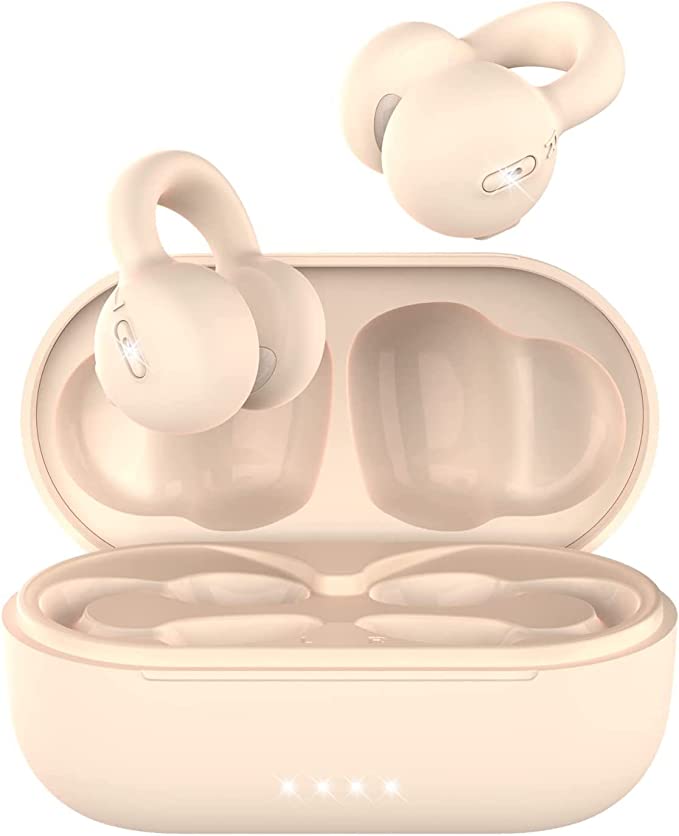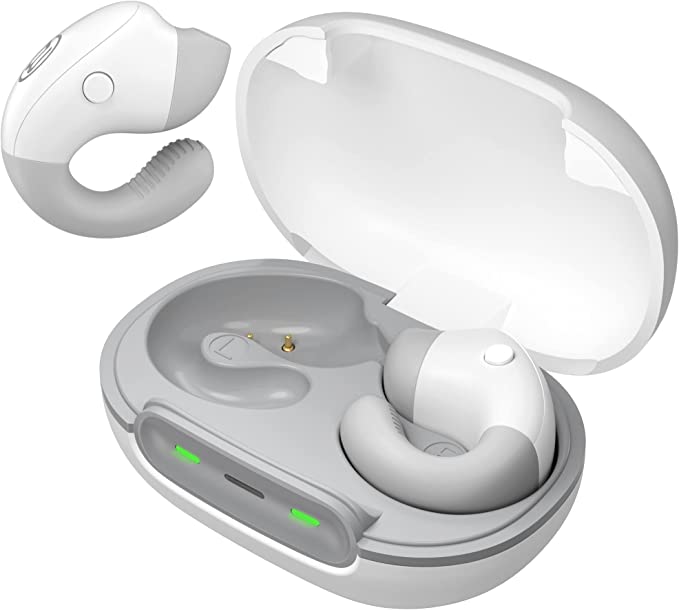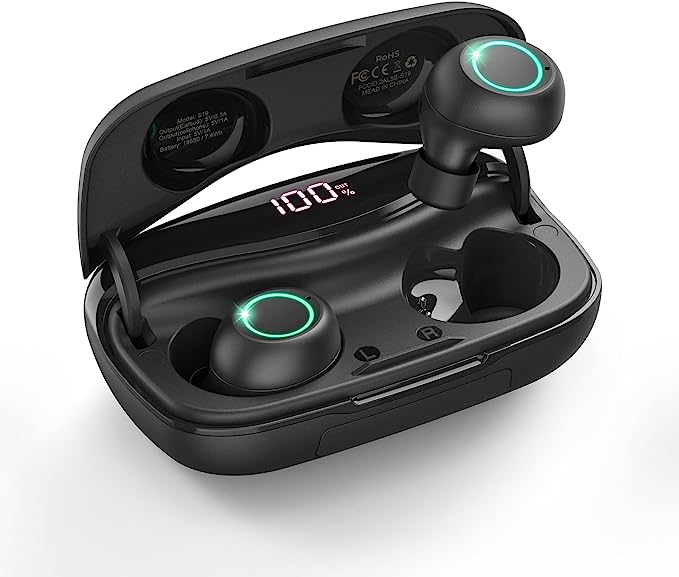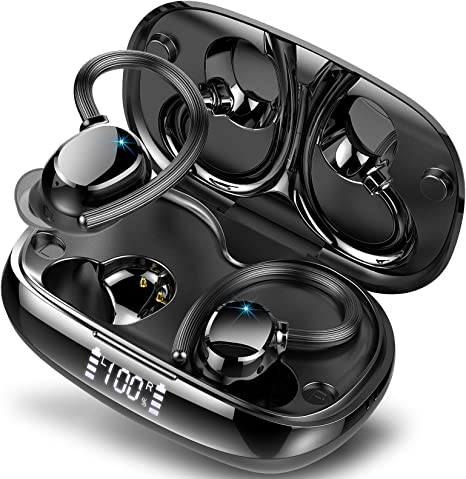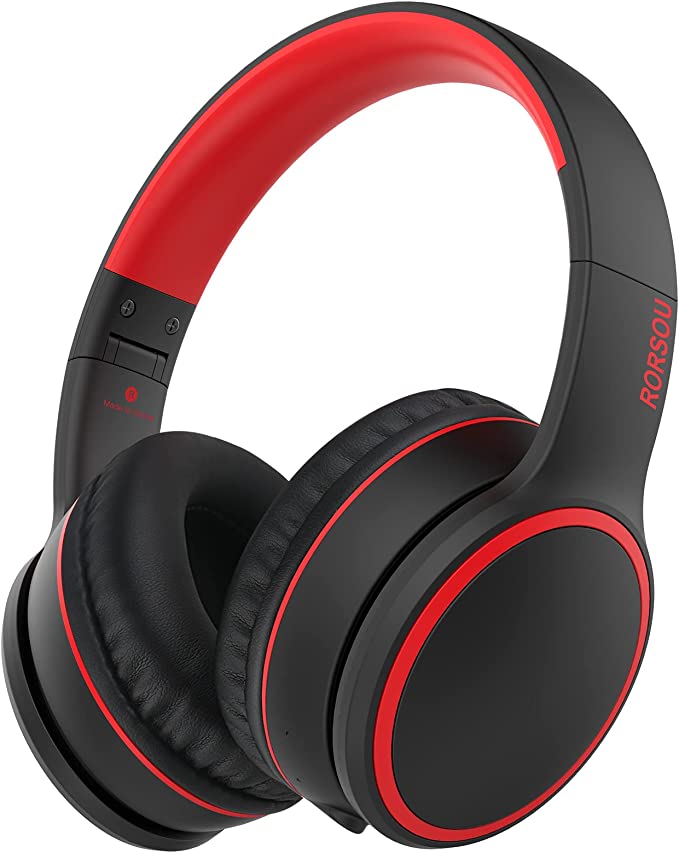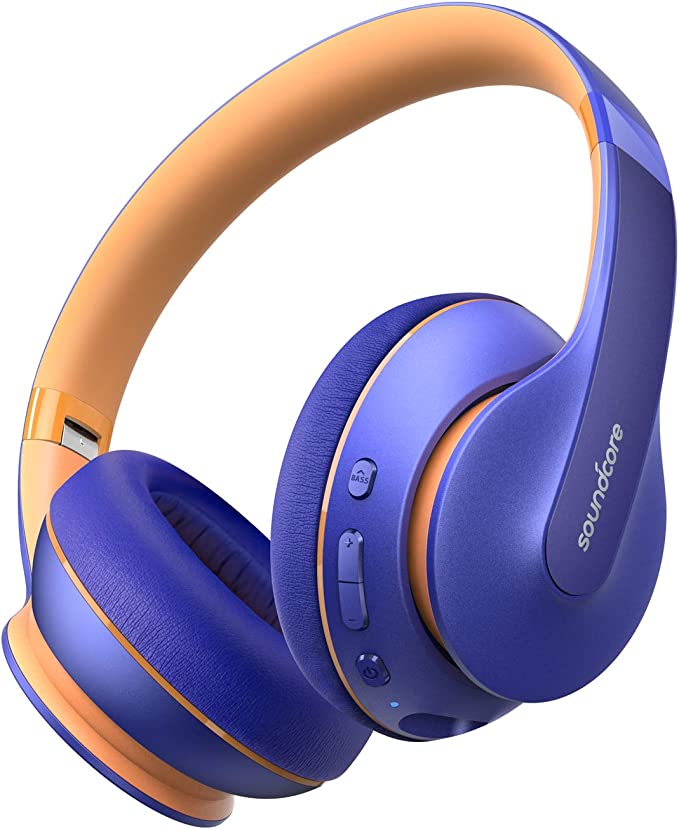BOLOXA X-U8I Wireless Earbuds: Unveiling the Science of Sound, Stability, and Endurance
Update on May 30, 2025, 7:10 a.m.
We’ve all been there. You’re hitting your stride on a morning run, lost in the rhythm of your favorite playlist, when a rogue earbud makes a desperate leap for freedom. Or perhaps you’re navigating a bustling city street, the soundtrack to your commute abruptly devolving into a symphony of stutters and dropouts. Maybe it’s the sudden dread of a looming dark cloud, knowing that a downpour could spell disaster for your precious audio companions. In our increasingly untethered world, the quest for the perfect wireless earbuds – those that seamlessly blend performance, resilience, and comfort without demanding a king’s ransom – feels almost universal. It’s a desire for an audio experience that simply works, letting us immerse ourselves in sound, unburdened by the fickle nature of technology.
This journey into the science of sound and endurance isn’t just about one device; it’s about understanding the thoughtful engineering that can elevate everyday an audio gadget into a reliable partner. We’ll explore these principles through the lens of a product like the BOLOXA X-U8I Wireless Earbuds, which, according to their design specifications, aim to tackle many of these common frustrations head-on. So, let’s peel back the layers and discover the unseen science that endeavors to keep your soundtrack playing, no matter where life takes you.

The Invisible Embrace: Crafting Comfort and Stability for Ears in Motion
The agony of an ill-fitting earbud is a uniquely modern discomfort. That nagging pressure point, the constant, fidgety readjustment, the sinking feeling as an earbud loosens its grip during a vigorous workout – these are experiences that can transform an anticipated audio escape into an exercise in frustration. The challenge for designers is to create something that feels almost like an extension of the body, secure yet unobtrusive. This is where the science of ergonomics takes center stage.
Consider the “flexible earhook design,” a feature often highlighted in sports-oriented earbuds like the BOLOXA X-U8I. From a biomechanical perspective, an over-ear hook fundamentally changes how the device interacts with your ear. Instead of relying solely on the friction within the ear canal (the concha and ear canal entrance), an earhook distributes the earbud’s weight and any forces from movement across a larger, more stable area – the back and top of the auricle (the visible part of your ear). Think of it like a well-designed backpack: a heavier load can feel surprisingly manageable if the weight is evenly distributed across your shoulders and hips, rather than digging into a single point. This distribution not only drastically improves stability, preventing the dreaded mid-jump dislodge, but also significantly enhances long-term comfort by minimizing pressure on sensitive areas of the ear. The flexibility of the material used in such hooks is also key, allowing it to conform to the unique contours of different ears without exerting undue force.
Complementing this aural embrace is the often-underestimated significance of customizable eartips – typically provided in small, medium, and large sizes, as is the case with the X-U8I. This isn’t merely a matter of preference; it’s crucial 과학 (science). Achieving a proper acoustic seal within the ear canal serves two vital functions. Firstly, it dramatically impacts sound quality, particularly bass response. Low-frequency sounds require a relatively sealed chamber to propagate effectively to the eardrum; a leaky fit allows bass to dissipate, resulting in a thin, tinny sound. Secondly, a snug fit provides a degree of passive noise isolation, physically blocking out some ambient sounds and allowing you to immerse yourself more fully in your audio without needing to crank up the volume to potentially harmful levels. The “one size fits all” approach is a fallacy in personal audio; the subtle anatomical differences in human ear canals necessitate this level of personalization for optimal comfort and sound fidelity.

Weathering the Storm (and Sweat): The Microscopic Shield of IPX7 and Nano-Coatings
For anyone who leads an active lifestyle, or simply lives in a region prone to unpredictable weather, moisture is the ever-present nemesis of electronic devices. The corrosive touch of sweat, an unexpected deluge during your commute, or even an accidental splash can send shivers of dread down any gadget owner’s spine. This is why ingress protection ratings have become such a critical benchmark, especially for wearable technology.
The BOLOXA X-U8I earbuds, for instance, are described with an IPX7 waterproof rating. This isn’t just a marketing buzzword; it’s a specific standard defined by the International Electrotechnical Commission (IEC) under standard 60529. The ‘X’ in IPX7 means the device hasn’t been specifically rated for dust ingress (or the manufacturer chose not to test for it), while the ‘7’ signifies a high level of water protection. Specifically, an IPX7 rating indicates that the device can withstand submersion in fresh water up to 1 meter deep for a duration of 30 minutes without harmful quantities of water seeping in. This level of protection is achieved through meticulous engineering of the earbud’s casing – ensuring tight seals around seams, buttons, and charging ports – and often, an additional invisible ally: a nano-coating.
Nano-coatings are a marvel of material science. Applied to the internal circuitry or the entire device, these are incredibly thin layers, often just nanometers thick (a nanometer is one billionth of a meter!), that create a hydrophobic (water-repelling) surface. Imagine the way water beads up and rolls off a lotus leaf; this “Lotus Effect” is a natural example of superhydrophobicity. Nano-coatings replicate this at a microscopic level. They don’t necessarily make the device hermetically sealed in the traditional sense, but rather prevent water molecules from adhering to and penetrating sensitive electronic components. So, whether it’s profuse sweating during a high-intensity interval training session or getting caught in a sudden rain shower, the combination of robust sealing and this microscopic raincoat offers a significant degree of peace of mind, letting you focus on your activity rather than a frantic dash for cover.

The Unseen Lifeline: Decoding 12 Hours of Audio Endurance
In our always-on, always-connected world, battery anxiety has become a pervasive modern malady. There’s a unique kind of disappointment reserved for when your wireless earbuds signal their impending demise with that dreaded low-battery beep, just as you’re hitting the crescendo of your workout playlist or settling in for a long journey. The promise of extended playtime, such as the “12Hrs Long Battery” (with 10-12 hours of active playtime and around 100 hours of standby time) attributed to the BOLOXA X-U8I, is therefore a highly coveted feature.
This endurance isn’t achieved by simply cramming in the largest possible battery; it’s a delicate dance of capacity and efficiency. At the heart of most modern portable electronics, including these earbuds, are Lithium-ion (Li-ion) batteries. These are favored for their high energy density – meaning they can store a relatively large amount of energy in a small and lightweight package – and their relatively slow self-discharge rate when not in use. The “1 Lithium Ion batteries required” statement in the product details points to this established technology.
However, the raw capacity of the battery is only half the story. The true key to long-lasting performance lies in the efficiency equation – how judiciously that stored energy is consumed. This is where the synergy between hardware and software becomes critical. A major contributor to the X-U8I’s touted longevity is its use of Bluetooth 5.3. As we’ll explore further, one of the significant advancements in newer Bluetooth versions is a strong focus on Low Energy (LE) audio profiles and enhanced power control mechanisms. This means the wireless communication itself sips power rather than guzzling it. Furthermore, optimized power management integrated into the earbuds’ chipset constantly works to minimize energy waste during operation and standby. The claim of a full recharge in a relatively brief 1.5 to 2 hours also speaks to efficient charging circuitry, designed to replenish the power cells quickly without unduly stressing them, balancing charging speed with long-term battery health. It’s like a seasoned marathon runner: their impressive endurance comes not just from a good “fuel tank” (battery capacity) but also from an incredibly efficient “running form” (power management and low-energy components).

The Unbroken Thread: Bluetooth 5.3 and the Pursuit of Seamless Connection
The very premise of wireless audio hinges on the reliability of that invisible thread connecting your earbuds to your sound source. Few things shatter the immersive magic of music or the flow of an important call more effectively than a stuttering, crackling, or altogether dropped Bluetooth connection. The frustration of pairing difficulties or noticeable lag between video and audio can quickly turn the convenience of wireless into a liability. This is why advancements in Bluetooth technology are so pivotal.
The BOLOXA X-U8I earbuds leverage Bluetooth 5.3. To appreciate what this means, it’s helpful to have a basic understanding of Bluetooth itself. It’s a wireless technology standard that uses short-wavelength UHF radio waves in the 2.4 GHz ISM (Industrial, Scientific, and Medical) band to exchange data between devices over short distances. It employs a master/slave architecture and frequency-hopping spread spectrum (FHSS) to mitigate interference.
Each new version of Bluetooth, ratified by the Bluetooth Special Interest Group (SIG), aims to build upon its predecessors. Bluetooth 5.3, specifically, brings several refinements pertinent to the user experience of devices like wireless earbuds: * Enhanced Connection Stability: One of the key focuses of Bluetooth 5.3 is improving the robustness of connections. It introduces features like improved channel classification, where the device becomes better at identifying and avoiding “bad” or interference-prone channels. This translates to fewer random dropouts, even in environments with a lot of other 2.4 GHz traffic (like busy gyms with many Bluetooth devices, Wi-Fi networks, and even microwave ovens). * Greater Power Efficiency: As mentioned in the context of battery life, Bluetooth 5.3 further refines Low Energy (LE) audio capabilities. This includes more efficient data transmission protocols and power control features that allow both the earbuds and the source device to conserve energy during active use and idle periods. * Potentially Faster and More Reliable Pairing: While not solely dependent on the version number, enhancements in Bluetooth 5.3 can contribute to quicker initial pairing and more seamless reconnection when you take your earbuds out of their case. * Support for Future Audio Innovations: Bluetooth 5.3 lays more groundwork for LE Audio, a suite of features promising higher audio quality at lower bitrates, improved power consumption for audio streaming, and better support for features like Auracast™ broadcast audio (though the implementation of specific LE Audio features depends on the individual device’s chipset and software).
For the listener, these technical underpinnings manifest as a more fluid and dependable audio experience. It’s the sound of stability – your music playing without interruption, your calls remaining clear, and your earbuds staying connected when you need them most. Think of Bluetooth 5.3 as an exceptionally skilled air traffic controller, expertly navigating data packets through an increasingly crowded wireless sky to ensure they reach their destination smoothly and efficiently.

The Symphony of Simplicity: Sound, Calls, and Tactile Control
Ultimately, beyond the intricate dance of radio waves and power management, the core purpose of any earbud is to deliver sound and facilitate communication, all while being effortlessly controllable. The X-U8I specifications touch upon “HD Stereo Audio” and “Crisp Voice Calls,” alongside a deliberate choice for “button control.”
The term “HD Stereo Audio” is often used in marketing, but from a scientific perspective, it implies a certain level of fidelity in sound reproduction. This generally means the earbuds are engineered to offer a balanced frequency response – the ability to reproduce low (bass), middle (mid-range), and high (treble) frequencies accurately and without undue emphasis or attenuation in any particular area. The product description mentions “powerful bass, mellow mid-range, and clear treble,” which points to this goal of a well-rounded sound profile. Achieving this involves careful selection and tuning of the audio drivers (the tiny speakers within the earbuds), the acoustic design of the earbud housing, and the quality of the digital-to-analog conversion. Stereo sound itself, by delivering different audio information to each ear, creates a sense of spaciousness and directionality, making music more immersive and engaging.
For “Crisp Voice Calls,” the quality of the built-in microphones and any accompanying noise-reduction technology is paramount. The description mentions “Excellent microphones capture your clear voice for transmission.” This often involves not just the sensitivity of the microphone elements themselves, but also their strategic placement to better capture the user’s voice and minimize the pickup of ambient noise. Some earbuds also employ digital signal processing (DSP) algorithms, like cVc (Clear Voice Capture) or similar technologies, to further filter out background sounds, ensuring that your voice comes through clearly to the person on the other end of the line, even if you’re in a less-than-ideal acoustic environment.
In an era increasingly dominated by touch-sensitive surfaces, the choice of physical button controls on the X-U8I is a noteworthy design decision, particularly for a device intended for active use. While touch controls can offer a sleek aesthetic, they can sometimes be prone to accidental activation (e.g., when adjusting the fit or if brushed by hair or clothing) or become less responsive with sweaty fingers. Physical buttons, with their distinct tactile “click,” provide unambiguous feedback. This can be especially beneficial during a workout when your focus is elsewhere, or if you’re wearing gloves. The mention of a “multi-function button, as well as a dedicated volume button to adjust the volume and switch songs” suggests an intuitive layout designed for easy, eyes-free operation, simplifying the user experience and keeping you in control of your audio without fumbling.

The Sum of Its Parts: Value, Vision, and the Voice of the User
Individually, features like robust waterproofing, an ergonomic fit, extended battery life, stable wireless connectivity, and clear audio are all desirable. However, the true measure of a device like the BOLOXA X-U8I lies in how these scientifically-grounded elements synergize to create a cohesive and valuable user experience, particularly for the active individual who demands reliability without a premium price tag.
The product description for BOLOXA mentions a core value of “sincerity and effort,” aiming to “create high-quality products and excellent services.” One might see this philosophy reflected in the thoughtful inclusion of practical features. For example, providing three distinct eartip sizes isn’t a high-cost addition, but it demonstrates an understanding of individual anatomical differences and a commitment to user comfort and optimal sound. Opting for IPX7 waterproofing suggests an effort to build a resilient product that can withstand the rigors of its intended use. The choice of reliable button controls over perhaps trendier touch interfaces could also be seen as a sincere effort to prioritize usability in active scenarios.
While current availability for this specific model is noted as uncertain in the provided information, historical context from earlier analysis of user reviews (as mentioned in the initial draft provided to me) indicated a price point around $15-17. At such a price, delivering a feature set that includes Bluetooth 5.3, IPX7 waterproofing, and a 12-hour battery life represents a significant technological value. Users, in that previous context, reportedly expressed surprise at the quality offered, with some even comparing them favorably in practical terms to much more expensive alternatives, suggesting that the perceived “effort” in engineering translated into tangible “sincerity” in value. This isn’t to say they would outperform premium audiophile gear, but rather that they aimed to hit a sweet spot of functionality, durability, and affordability.

The Enduring Note: Technology in Service of Human Experience
Exploring the BOLOXA X-U8I earbuds, or any well-considered piece of technology, is a reminder that even seemingly simple devices are often packed with an impressive amount of science and engineering. From the intricate radio frequency management of Bluetooth 5.3 ensuring your music doesn’t skip a beat, to the material science of nano-coatings repelling sweat and rain, and the ergonomic principles guiding a comfortable and secure fit – each element plays a crucial role.
The goal of such technology, at its best, is to remove friction from our lives, to enhance our experiences, and to allow us to more fully engage with our passions, whether that’s pushing our physical limits, losing ourselves in the world of a podcast, or simply staying connected with clear communication. While the specific components and brand names may evolve, the underlying scientific principles of good design – efficiency, resilience, user-centricity – endure. Perhaps the next time you pop in your favorite pair of wireless earbuds, you’ll pause for a moment to appreciate the unseen science holding your soundtrack, a quiet testament to human ingenuity working to make our world a little more seamless, a little more enjoyable, one beat at a time.
